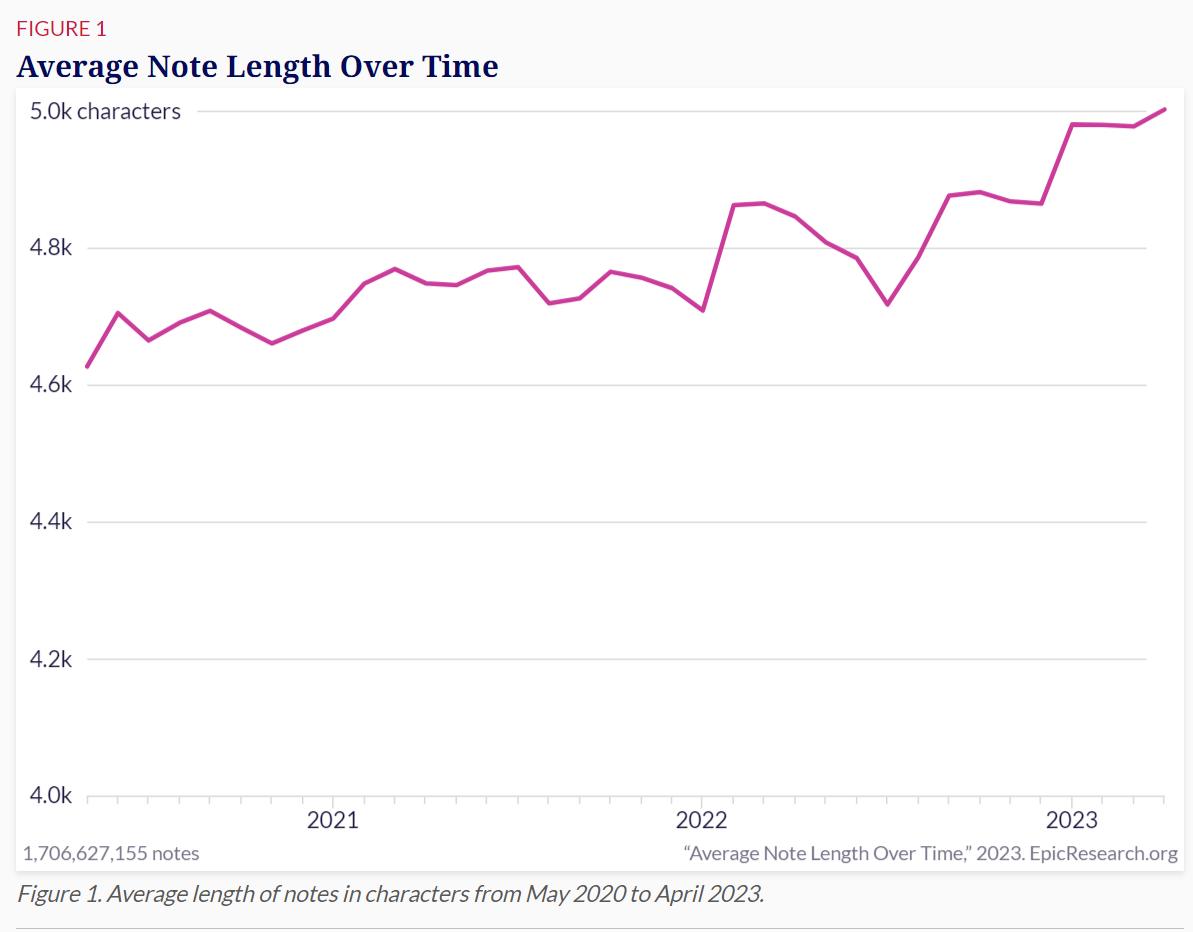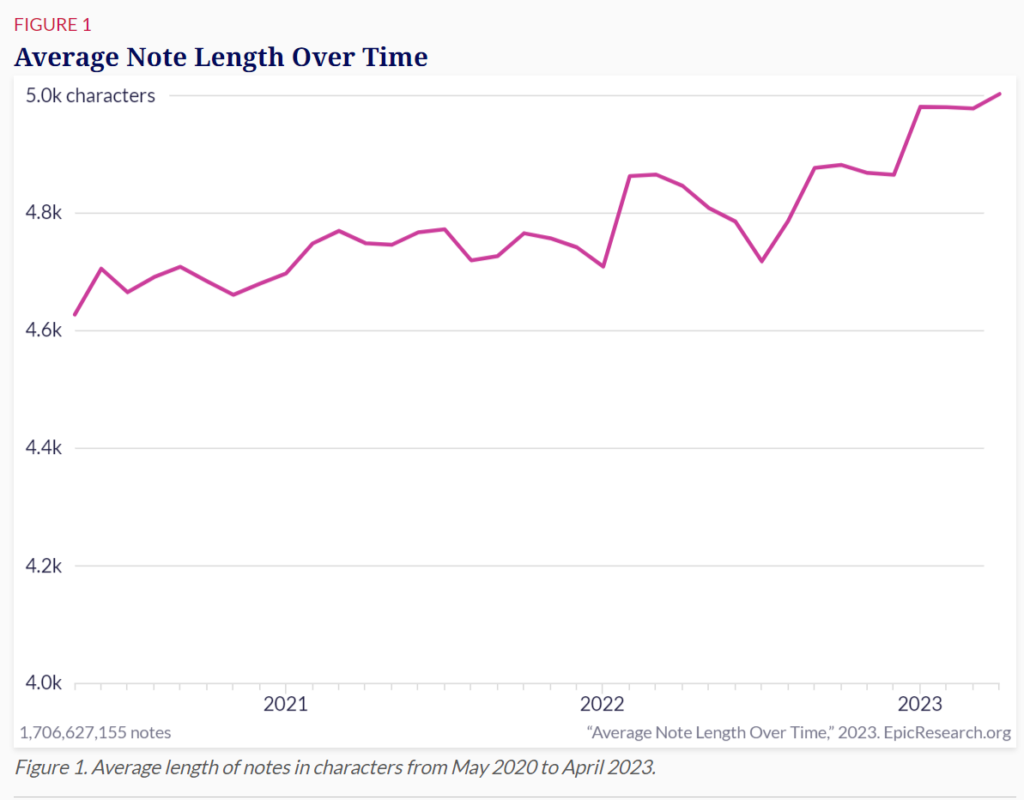
What You Should Know:
- In 2021, the Centers for Medicare and Medicaid Services (CMS) implemented changes to evaluation and management (E/M) CPT billing codes aimed to reduce the administrative documentation burden on providers.
- Epic Research just came out with a new study that shows the average length of clinical notes has continued to increase over the last three years.
Understanding Why Clinical Notes Remain ‘Bloated’
The study evaluated 1.7 billion clinical notes written by 166,318 outpatient providers in the U.S. from May 2020 to April 2023 to determine the average length in characters for each note. It found that even though average note length increased, most providers spent less time writing notes, which could help providers free up time for patient care or reduce work after hours.
Key findings are as follows:
- Since 2021, despite increases in note length, the average time spent writing notes decreased 11.1% over this same period, from an average of 5.4 minutes per note to 4.8 minutes per note. Additionally, providers are spending less time in clinical review activities in the EHR.
- The average note length of each provider in 2020 was compared to their average note length in 2023. Providers were grouped into deciles based on the extent of change in their average note length during that period. It was observed that approximately 40% of providers decreased their average note length over the three-year period.
- The 10% of providers with the greatest decrease in note length represented various specialties, such as primary care, internal medicine, surgical specialties, dermatology, cardiology, and psychiatry. This suggests that reducing note length is feasible in almost any specialty.
- The study examined changes in note composition methods and their correlation with note length over time. It found that organizations reducing their use of SmartTools and copy/paste functions had shorter average notes. Conversely, organizations with longer notes had consistent SmartTools usage and increased copy/paste functions. This aligns with previous research linking increased SmartTools and copy/paste use to longer notes.
- Despite the increase in average note length, most providers spent less time writing notes. This could potentially allow providers to allocate more time to patient care or reduce their workload outside regular hours. Previous studies indicate that the changes in E/M practices may offer additional benefits to provider well-being, such as reducing cognitive burden and enhancing physician efficiency in documentation.

